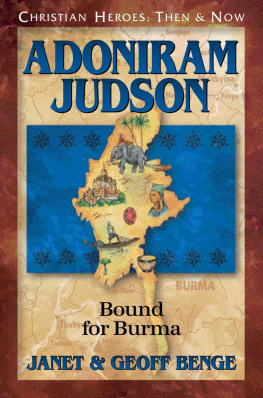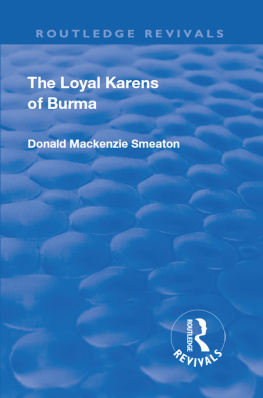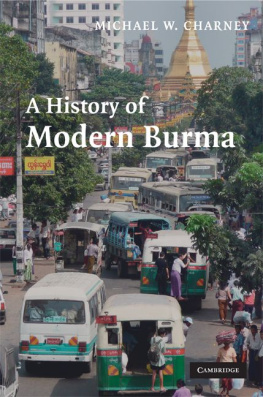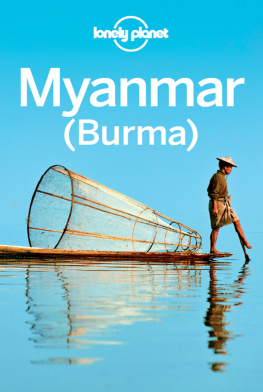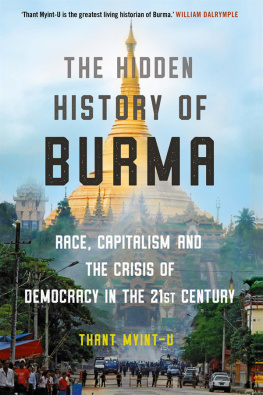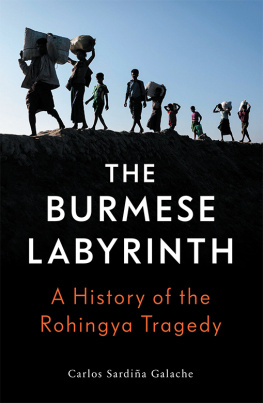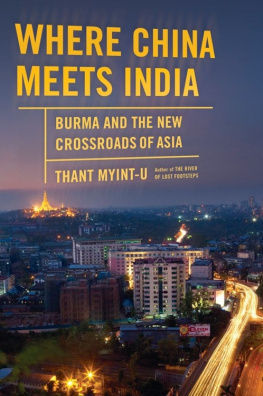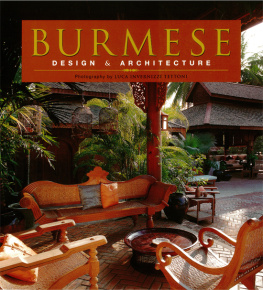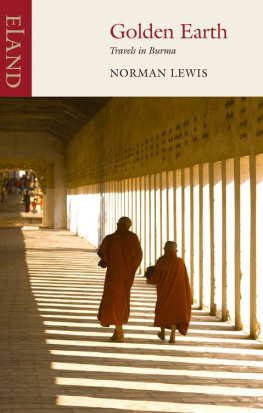First published in 1883 by
Trbner & Co Ltd
Reprinted 2000, 2001, 2002 by
Routledge
2 Park Square, Milton Park, Abingdon, Oxon, OX14 4RN
Transferred to Digital Printing 2007
Routledge is an imprint of the Taylor & Francis Group
1883 Arthur P Phayre
All rights reserved. No part of this book may be reprinted or reproduced or utilized in any form or by any electronic, mechanical, or other means, now known or hereafter invented, including photocopying and recording, or in any information storage or retrieval system, without permission in writing from the publishers.
The publishers have made every effort to contact authors/copyright holders of the works reprinted in Trbners Oriental Series. This has not been possible in every case, however, and we would welcome correspondence from those individuals/companies we have been unable to trace.
These reprints are taken from original copies of each book. In many cases the condition of these originals is not perfect. The publisher has gone to great lengths to ensure the quality of these reprints, but wishes to point out that certain characteristics of the original copies will, of necessity, be apparent in reprints thereof.
British Library Cataloguing in Publication Data
A CIP catalogue record for this book
is available from the British Library
History of Burma
ISBN 0-415-24550-8
Southeast Asia: 7 Volumes
ISBN 0-415-24295-9
Trbners Oriental Series
ISBN 0-415-23188-4
HISTORY OF BURMA
INCLUDING
BURMA PROPER, PEGU, TAUNGU, TENASSERIM, AND ARAKAN.
from the Earliest Time to the End of the first War with British India.
BY
LIEUT.-GENERAL SIR ARTHUR P. PHAYRE,
G.C.M.G., K.C.S.I., AND C.B.
MEMBRE CORRESPONDANT DE LA SOCIT ACADMIQUE INDO-CHINOISE DE FRANCE.
LONDON:
TRBNER & CO., LUDGATE HILL.
1883.
[All rights reserved.]
PREFACE
TOWARDS the end of last century, Dr. Francis Buchanan, who accompanied Colonel Symes on his mission to Ava, remarked that the histories of the Burmas might throw some light on a part of the world little known, and he hoped soon to be able to produce a translation of the Mah Rjweng, or Great History of Kings. The Most Reverend Bishop Bigandet, Vicar Apostolic in Ava and Pegu, in his interesting Legend of the Burmese Budha, recounts the salient points of history which concern the establishment of Buddhism in Burma. The Rev. Dr. Mason has contributed much to a knowledge of the history of Burma and of Pegu; and the late Captain Forbes, whose early death is a great loss to the cause of Burmese research, has published valuable observations on the history and language of the country.
Professor Lassen, who, more than any other of the great scholars of Europe, studied Burmese history, has observed: The Burmese have lengthy historical writings, in which not only their own history, but that of Arakan, Pegu, Zimmay, Labang, and other neighbouring lands is given. These writings deserve on the whole the praise of credibility, as their authors relate not only the favourable events of their history, but also the unfavourable. Their inscriptions help to confirm their statements.
Notwithstanding the many articles by competent authors which have appeared on the history of Burma, no one has yet published in any European language a continuous history of the country, whereby the rise and progress of the monarchy, and of the people, might be traced, and the succession of the events recorded, with their relation one to another, explained. In the Gazetteer of British Burma, lately published by authority at Rangoon, the full history has been narrated in a more connected form than had been done before. But there still remain blanks to be filled in the history of Arakan, and the other countries which formed the empire of Burma up to the early part of the present century.

The chief authorities which have been followed in this little book are the Mah Rjweng, a copy of which was obtained from the library of the king of Burma; a history of Arakan written by Maung Mi, a learned Arakanese Hsay; and a history of Pegu in the Mun language by Hsay dau Athw, a Talaing Buddhist monk, which was translated into Burmese. The lastnamed work is little more than a fragment, as the materials for a full history of the Mun people either do not exist, or are not now available in Pegu.
Early in the sixteenth century Europeans began to visit Burma in considerable numbers, and their narratives have been used to supplement or correct in some particulars the native histories. Colonel Michael Symes, in a historical memoir prefixed to his Account of an Embassy to the Kingdom of Ava, gives a trustworthy account of events commencing from the re-establishment of the kingdom of Pegu under Binya Dla in A.D. 1740 until the time of his own embassy in 1795. This narrative has evidently been chiefly derived from persons whom the writer met in Rangoon, some apparently Armenians in the Burmese service, who had been actors or eyewitnesses in most of the events described.
The general fulness of the national historical records of the countries which comprised the Burmese empire is remarkable. They present a marked contrast to the scantiness, or total absence of such writings, among the ancient Hindu kingdoms. For though, as remarked by Professor Horace Wilson, genealogies and chronicles are found in various parts of India, recorded with some perseverance if not much skill, still they are few in comparison with the number and variety of states which May not this work with probability be referred to a Buddhist original, adapted to Hindu readers after the triumph of Brahmanism?
The annals of Siam do not appear to have been kept with the same regularity and fulness as those of Burma, though they furnish an outline of prominent events. Of the ancient native histories of Anam, Cambodia, and Tonquin, we have as yet no detailed account available to the European student. But this deficiency is rapidly being supplied by the Socit Acadmique Indo-Chinoise of France.


